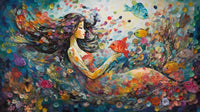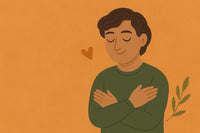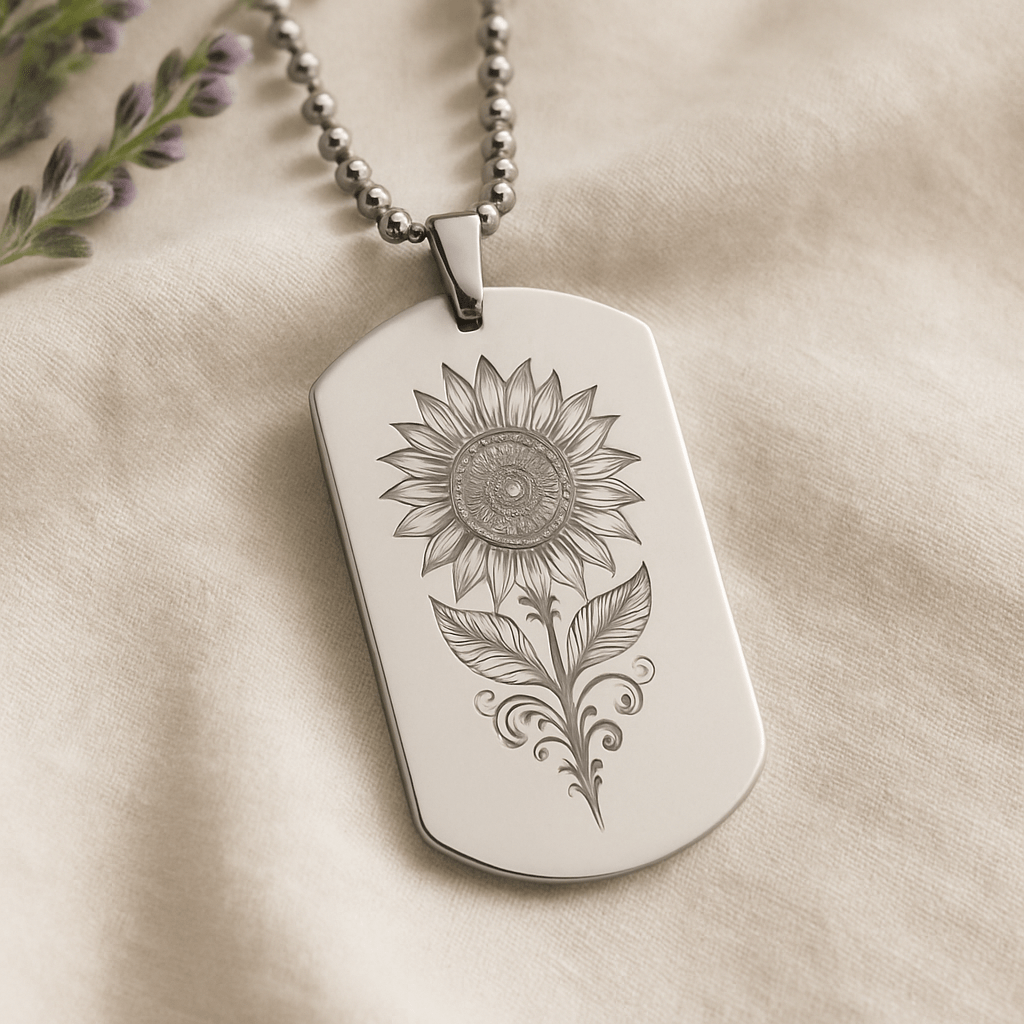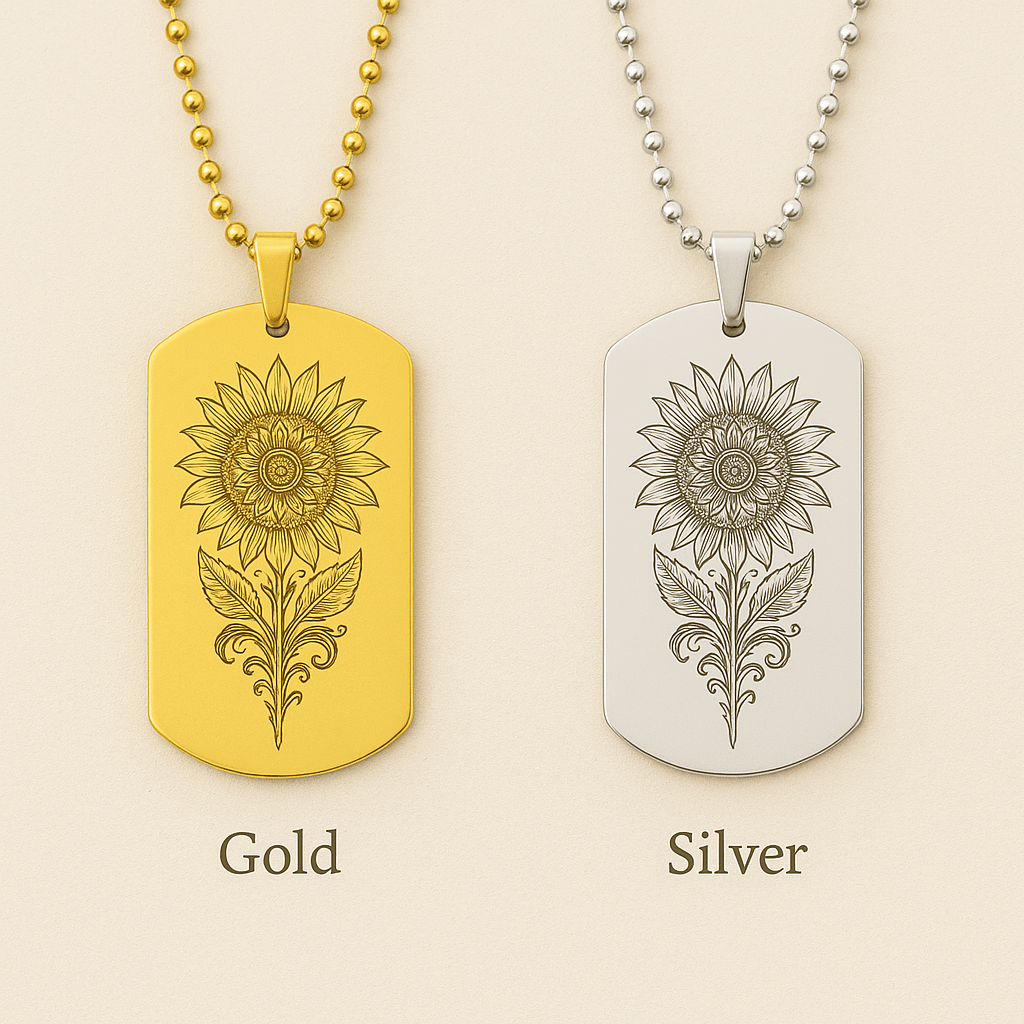Proprioceptive Stimming: What It is, Types & Benefits

Written by the HeyASD Editorial Team
Proprioceptive stimming is a sensory activity that has been found to be helpful for individuals with certain conditions, including autism spectrum disorder (ASD), attention deficit hyperactivity disorder (ADHD), and anxiety. It involves engaging in repetitive movements or actions that provide proprioceptive input to the body.
In this article, we'll explore what proprioceptive stimming is, how it works, and its benefits for individuals who use it.
Table of Contents
- What Is Proprioceptive Stimming?
- What Are the Different Types of Proprioceptive Stimming?
- Rocking
- Spinning
- Jumping
- Weighted objects
- Compression clothing
- Chewing
- Deep pressure touch
- How Does Proprioceptive Stimming Work?
- Who Can Benefit from Proprioceptive Stimming?
- How to Incorporate Proprioceptive Stimming into Daily Life
- Potential Risks and Precautions of Proprioceptive Stimming
- Conclusion
- FAQs
1. What Is Proprioceptive Stimming?
Proprioceptive stimming, also known as "proprioceptive seeking behavior" or "proprioceptive input," involves repetitive movements or actions that provide pressure or resistance to the body. This input helps individuals with sensory processing difficulties to regulate their bodies and emotions. Proprioceptive stimming can involve various activities, such as rocking, spinning, jumping, or chewing.
Proprioception is the sense of where our body is in space and how our muscles and joints are moving. For some individuals, their proprioceptive system is under-responsive, meaning they don't receive enough input from their environment to regulate their body and emotions. Proprioceptive stimming provides the necessary input to help regulate their body and emotions.
2. What Are the Different Types of Proprioceptive Stimming?
There are several types of proprioceptive stimming that individuals may engage in. Here are some examples:
Rocking
Rocking is a common form of proprioceptive stimming that involves moving back and forth while sitting or standing. This movement provides pressure and rhythm to the body and can help individuals feel calm and centered.
Spinning
Spinning is another type of proprioceptive stimming that involves rotating the body in circles. This movement provides deep pressure to the joints and muscles and can help individuals feel more grounded and focused.
Jumping
Jumping is a high-impact form of proprioceptive stimming that involves jumping up and down repeatedly. This movement provides a significant amount of pressure to the body and can help individuals release excess energy.
Weighted Objects
Using weighted objects, such as weighted blankets or vests, can also provide proprioceptive input to the body. These objects provide deep pressure to the muscles and joints and can help individuals feel more calm and relaxed.
Compression Clothing
Compression clothing, such as compression shirts or socks, can also provide proprioceptive input to the body. This clothing provides pressure to the muscles and joints and can help individuals feel more regulated and focused.
Chewing
Chewing on objects, such as gum or chewy toys, can also provide proprioceptive input to the body. This activity helps to engage the muscles in the jaw and can help individuals feel more calm and focused.
Deep Pressure Touch
Deep pressure touch, such as hugs or massages, can also provide proprioceptive input to the body. This activity provides pressure to the skin and muscles and can help individuals feel more grounded and relaxed.
3. How Does Proprioceptive Stimming Work?
Proprioceptive stimming works by providing deep pressure and resistance to the body, which helps to activate the proprioceptive system. This input helps individuals with sensory processing difficulties to regulate their body and emotions.
When the proprioceptive system is activated, it sends signals to the brain to release neurotransmitters, such as serotonin and dopamine, which help individuals feel calm and focused.
4. Who Can Benefit from Proprioceptive Stimming?
Proprioceptive stimming can be beneficial for individuals with sensory processing difficulties, including those with autism spectrum disorder (ASD), attention deficit hyperactivity disorder (ADHD), anxiety, or other neurological conditions. It can also be helpful for individuals who experience sensory overload or have difficulty regulating their body and emotions.
5. How to Incorporate Proprioceptive Stimming into Daily Life
Incorporating proprioceptive stimming into daily life can be as simple as taking regular breaks to engage in activities that provide pressure and resistance to the body. Some examples include:
- Taking a walk or engaging in physical activity
- Using a weighted blanket or vest
- Wearing compression clothing
- Chewing on gum or a chewy toy
- Engaging in deep pressure touch activities, such as hugging or massage
It's important to note that each individual may have different preferences and needs when it comes to proprioceptive stimming. It's important to experiment with different activities and find what works best for each individual.
6. Potential Risks and Precautions of Proprioceptive Stimming
While proprioceptive stimming can be beneficial for individuals with sensory processing difficulties, there are some potential risks and precautions to consider. These include:
- Overstimulation: Engaging in too much proprioceptive stimming can lead to overstimulation and make it more difficult for individuals to regulate their body and emotions.
- Injury: High-impact proprioceptive stimming, such as jumping, can pose a risk of injury if not done safely and with proper supervision.
- Interference with daily activities: Engaging in proprioceptive stimming during times when it's not appropriate, such as during class or while driving, can interfere with daily activities.
It's important to consider these risks and take appropriate precautions when engaging in proprioceptive stimming.
Join Hundreds of Autistic Adults Feeling
More Comfort in Their Own Skin
Use code WELCOME10 for 10% off your first order.
Start Your Comfort Journey7. Conclusion
Proprioceptive stimming is a sensory activity that provides deep pressure and resistance to the body, helping to activate the proprioceptive system and promote feelings of calm and focus. It can be beneficial for individuals with sensory processing difficulties, including those with autism spectrum disorder, ADHD, anxiety, or other neurological conditions. By incorporating proprioceptive stimming into daily life and taking appropriate precautions, individuals can benefit from this sensory activity.
If you or a loved one has sensory processing difficulties, it's important to consult with a healthcare professional or occupational therapist to determine if proprioceptive stimming could be a helpful tool in managing symptoms.
By working with a professional and finding what works best for each individual, proprioceptive stimming can be a valuable addition to a comprehensive approach to sensory processing difficulties.
8. FAQs
Is proprioceptive stimming only for individuals with autism?
No, proprioceptive stimming can be beneficial for individuals with a variety of neurological conditions or sensory processing difficulties.
How often should someone engage in proprioceptive stimming?
The frequency of proprioceptive stimming can vary based on individual needs and preferences. It's important to find a balance that works best for each individual.
Are there any risks associated with proprioceptive stimming?
Yes, there are potential risks associated with proprioceptive stimming, including overstimulation, injury, and interference with daily activities.
Can proprioceptive stimming be used as a replacement for other therapies or treatments?
No, proprioceptive stimming should be used in conjunction with other therapies and treatments as part of a comprehensive approach to managing sensory processing difficulties.
Are there any professional resources or guidance available for incorporating proprioceptive stimming into daily life?
Yes, occupational therapists and other healthcare professionals can provide guidance and resources for incorporating proprioceptive stimming into daily life. It's important to consult with a professional to ensure that proprioceptive stimming is being used safely and effectively.
On This Page
Frequently asked questions
What are some simple proprioceptive stimming activities I can try at home?
How can proprioceptive stimming help reduce anxiety or overwhelm?
Are there ways to explain proprioceptive stimming to friends or family who don’t understand it?
How can sensory-friendly activities support the benefits of proprioceptive stimming?
What types of autism sensory tools or calming items can complement proprioceptive stimming?
How do I know if proprioceptive stimming is helping me or my loved one?
What are some safe disability support strategies to use alongside proprioceptive stimming?
Can stimming benefits for autism include improved focus or emotional regulation?
Are there comfortable clothing or decor options that support proprioceptive input throughout the day?

About the HeyASD Editorial Team
Autistic‑owned • Values‑led • Sensory‑friendly design
We are autistic creators, writers, and advocates dedicated to producing resources that are practical, sensory-aware, and grounded in lived experience. Our mission is to make information and products that support the autistic community accessible to everyone, without jargon or condescension. Learn more about our team.
This article is written from lived autistic experience and an evidence-aware perspective. It is for general informational purposes only and should not be taken as medical, legal or therapeutic advice.
Always consult a qualified clinician or occupational therapist for individual needs and circumstances.

About Our Autism Blog
HeyASD isn’t just a store, it’s a calm, supportive space created by and for autistic adults. Our blog shares sensory-friendly tips, identity-affirming stories, and heartfelt resources for navigating life as an autistic person. Whether you're late-diagnosed, exploring your needs, or supporting someone you love, you're welcome here.
Thank you for reading. We hope these resources bring comfort and clarity.





































